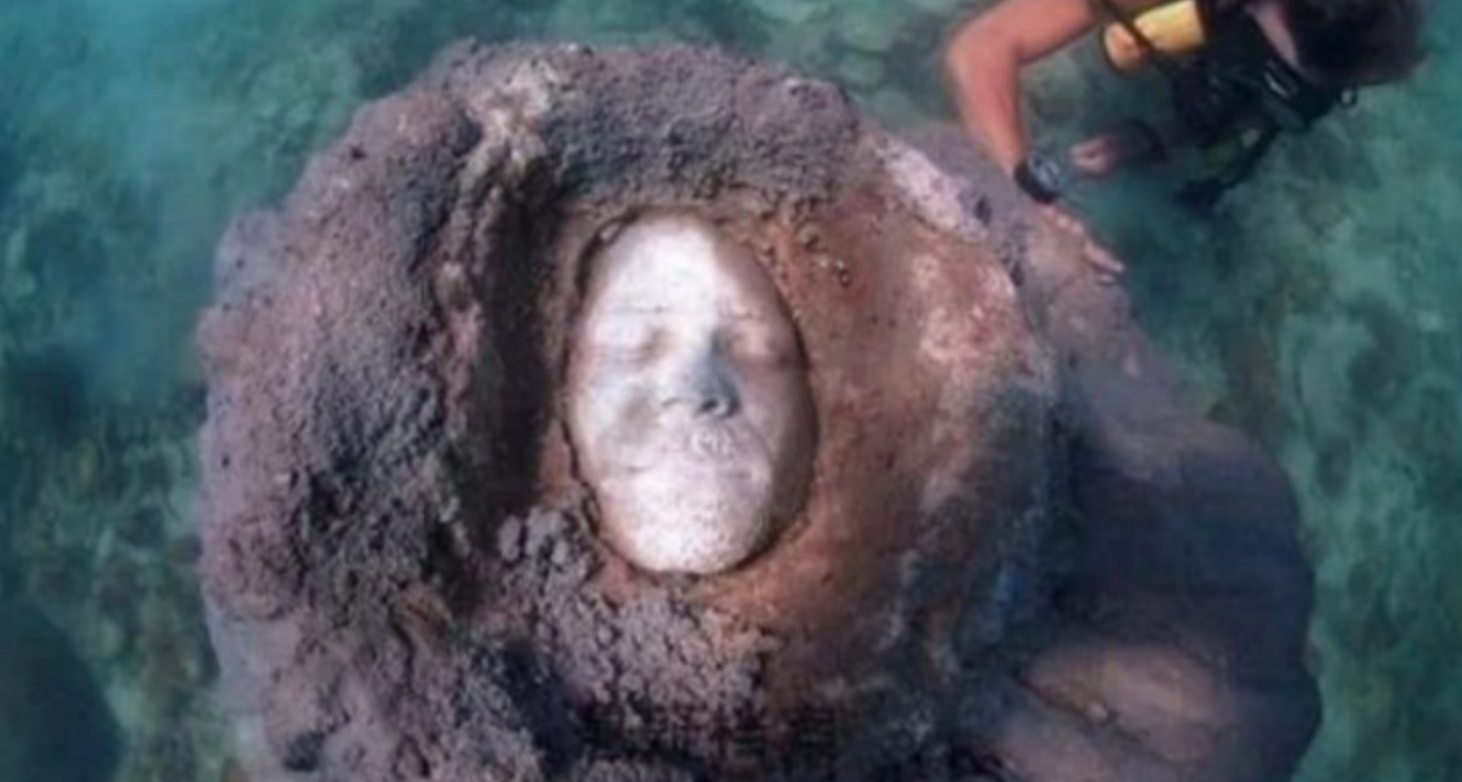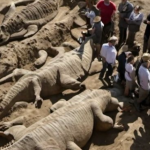Divers Discover Mysterious Faces at the Bottom of Koh Tao, Thailand

In the crystal-clear waters off the coast of Koh Tao, Thailand, a team of divers made a discovery that has sent ripples of excitement and intrigue through the archaeological community and beyond. While exploring the vibrant coral reefs and diverse marine life for which the area is famous, the divers stumbled upon a series of mysterious faces carved into the submerged rocks on the ocean floor.
The discovery was made by a group of recreational divers who frequent the area. One of the divers, Alex Matthews, recounted the moment they first saw the faces. “We were just finishing our dive, swimming back towards the boat, when I noticed something unusual on the seabed. As we got closer, it became clear that these were not natural formations but intricately carved faces.”

News of the underwater carvings quickly spread, attracting the attention of marine archaeologists and historians. Dr. Ananya Ratchapol, a leading expert in Southeast Asian maritime archaeology, led the initial investigation. “This is an extraordinary find,” she stated. “The faces appear to be part of a larger, submerged structure, possibly an ancient shrine or a ceremonial site.”
The carved faces, numbering over a dozen, vary in size and expression. Some have serene, almost meditative looks, while others appear to be in deep contemplation or mourning. The detail of the carvings, despite centuries underwater, is remarkably well-preserved, suggesting that the site has been largely undisturbed.
Initial carbon dating of organic materials found near the site indicates that the carvings could be over a thousand years old, placing them in the early medieval period. This was a time of significant cultural and economic exchange in Southeast Asia, with maritime trade routes connecting distant civilizations.

The discovery has sparked numerous theories about the origins and purpose of the carvings. One hypothesis is that they were created by an ancient civilization that once inhabited the area. Koh Tao, known as “Turtle Island,” has a rich history of settlement and cultural development, and these carvings could provide new insights into the spiritual and artistic practices of its early inhabitants.
Another theory suggests that the faces might be linked to ancient seafarers who used Koh Tao as a waypoint or sanctuary. The island’s strategic location and natural beauty could have made it a significant stop for maritime travelers, who might have carved the faces as offerings or to mark their presence.
As the investigation continues, advanced technology is being employed to further study the site. Underwater drones equipped with high-resolution cameras are mapping the area in detail, while sonar scans are helping to identify potential additional structures buried beneath the sand and coral.

The local community has embraced the discovery, seeing it as an opportunity to celebrate and preserve their heritage. Efforts are underway to protect the site from potential damage due to increased diving activity. The Thai government, in collaboration with international experts, is developing guidelines to ensure that the site remains accessible for study while being safeguarded for future generations.
The mysterious faces at the bottom of Koh Tao offer a tantalizing glimpse into the past, blending the allure of underwater exploration with the thrill of archaeological discovery. As researchers work to unravel the secrets of these ancient carvings, they are piecing together a story that has remained hidden beneath the waves for centuries.
This discovery not only enriches our understanding of Koh Tao’s historical significance but also highlights the importance of preserving underwater cultural heritage. The enigmatic faces serve as silent witnesses to a bygone era, inviting us to delve deeper into the mysteries of our shared human history.









